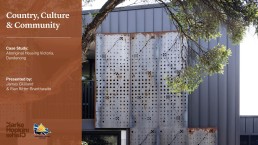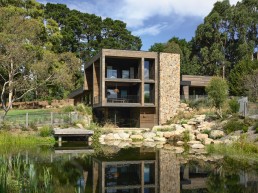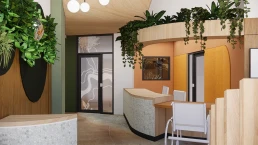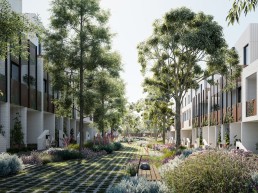Wetlands House
hello@henryro.com
Client: Green Magazine
Services: Editorial
Jo Fowler remembers the moment her husband Chris discovered the site of their new home in Merricks on Melbourne’s Mornington Peninsula 30 years ago. At the time they were running their local roofing business and Chris was called in by a builder friend renovating the 70-year-old weatherboard ‘bush build’ on the site of the district’s former dairy. “He stood on the roof and said, ‘Wow. One day I’d love to live in a place like this’,” she says.
It took a couple of decades for their dream block to come onto the market, but as soon as it did, Jo and Chris nabbed it and set to work. Chris is an avid gardener, and in 2016 they planted a lush productive garden with fruit trees, established a greenhouse, stables for their horses and a boatshed that they would live in during construction. They also assembled a crack team of local tradespeople who creatively navigated the difficulties of a 2020 lockdown build to create a home of extraordinary materials and craftsmanship.
The block slopes steeply downwards from south-west to north-east with panoramic views particularly eastward. Jo and Chris wanted a robust, earthy, energy-efficient house of natural materials, including stone salvaged from the property, and as much timber as the termites left untouched. It needed to age beautifully, use water wisely, and nestle down into a naturalistic landscape well protected from ferocious southerlies.
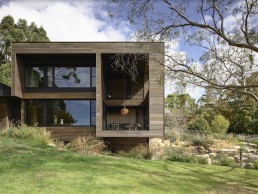
Singular Simplicity
hello@henryro.com
Client: Cantilever
Services: Digital Content Creation
For a celebrity chef who honed his craft at Noma and Rockpool and now helms Vue de monde, one of Australia’s most inventive fine diners, Hugh Allen is unexpectedly easy going and low-key.
So much so that when Cantilever Director Travis Dean first met him in the Brunswick showroom for a laconic chat about the compact kitchen he was renovating, he had no idea Hugh was one of the country’s most exciting young chefs with a design sensibility as natural and refined as his renowned cuisine.
“Hugh was so relaxed and chilled out, nonchalant in some ways, I didn’t really take him that seriously,” Travis recalls with a laugh. “He wandered in, went straight to Tableau and said, ‘I love this kitchen. How does it work and what does it cost?’ To be honest I didn’t expect to hear from him again. Often with younger people the budget doesn’t marry up. When I saw the email address was Vue de monde and realised he’s the executive chef there I thought, ‘Okay, maybe there’s something in this and it’ll keep progressing’.
It sure did. And not a moment too soon.
Hugh was already partway through an extensive renovation of a dilapidated Art-Deco apartment in Melbourne’s South Yarra. “It was a real dump when I bought it,” he says. “But I was always excited about the renovation and design part. It’s near the Botanical Gardens and I’ve always loved the area. It’s a small space so I wanted to optimise it. The kitchen is in the centre of the flat. It’s the first room you walk into when you enter. I decided to turn a bedroom next to the kitchen into a living room, and remove the adjoining wall to connect them and create a kitchen/dining space.” By the time he visited Cantilever’s showroom, work on the compact 2.6 x 2.3-square-metre kitchen area had already begun, including a double-width wall opening into the new living space and a new double-glazed window to admit gorgeous natural light and leafy vistas.
For Cantilever the timing had its challenges. “Usually we like to be engaged a long time before the builder gets on site,” Travis explains. “When projects aren’t led by design they tend to fall short. Ideally we talk with clients early, before they even start talking to builders or buying appliances or tiles. If people come in after they’ve ripped their old kitchen out and put new flooring down, for example, it limits our ability to move services.”

Read more:
https://www.cantileverinteriors.com/kitchen-design-inspiration-blog/kitchen-tableau-chef-apartment
Images:
Tess Kelly
Caring for ourselves as we co-design for mental health
hello@henryro.com
Client: ClarkeHopkinsClarke Architects
Services: Co-writing and Ghost Writing
Caring for ourselves while facing challenging project demands and deadlines is a continuous balancing act. Stephanie Clarke shares insights about personal care, mental health awareness, imperfect activism and key lessons learned when working in the co-design of mental health spaces.
The final report of the Royal Commission into Victoria’s Mental Health System was handed down in February 2021. Highlighting years of under-resourcing and systemic failures, it outlined 65 recommendations for improvement. In the wake of the report I have worked on some of the first mental health facilities developed in response, including Barwon Health’s Central Geelong Mental Health Hub. Learning how to co-design in this context has been a revelation – personally and professionally, in ways I could never have fully anticipated.
The pandemic has vastly increased the numbers of people experiencing and talking about mental health – in Australia and globally. This has helped to destigmatise mental health, but it also increased demand for services in an under-resourced system. After the Royal Commission, we were seeing increased funding and systemic change aimed at creating a more integrated, community-based system, where people can access health and wellbeing services close to home, work, family and other support.
We co-designed the Central Geelong Mental Health Hub with people with lived experience and clinicians, centring their experiences and insights. Designers who previously led user-engagement on projects were adjusting to the new reality of needing to earn their invitations into those discussions.
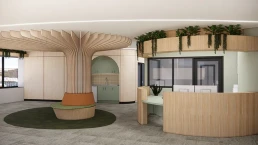
Read more:
https://parlour.org.au/mental-wellbeing/caring-for-ourselves-as-we-co-design-for-mental-health/
New 8-star Northcote project shows sustainable townhouse design is doable
hello@henryro.com
Client: Metro Property Development
Services: Publicity + Communications
Townhouses could be the sweet spot for people looking for inner city housing that has enough room to comfortably work-from-home. The trouble is, this housing type is notoriously hard to make energy efficient. But a new residential development in Northcote, Melbourne, looks like it can change all that.
The pandemic has people yearning for more space but with land at a premium and the need to avoid urban sprawl that cuts into food bowls and natural habitats, the need for higher density housing hasn’t gone away.
These covid-affected conditions have the townhouse market looking healthy, according to the Dr Andrew Wilson, chief economist at Australian property platform Archistar.
While demand for all higher-density dwelling types are subdued compared to detached homes, which have benefited from government stimulus programs such as HomeBuilder, townhouse construction continues to outperform units. Townhouses now make up 42.7 per cent market share of overall higher-density development.
From a sustainability perspective, the trouble with townhouses is they are an inherently inefficient building typology because they span multiple levels, sometimes as many as three or four.
This creates heat transfer between the different levels with hot air rising to the top level, SDC director Ben De Waard explains.

The Place Economy
hello@henryro.com
Client: Hoyne
Services: Custom Project – Book
Industry Returns to the City.
In New York, placemaking nous, deep pocket and long-term thinking is helping transform 15 blocks of rundown waterfront warehousing and manufacturing space in working-class Sunset Park into Industry City. The work of the team behind Chelsea Market, Brooklyn Navy Yards and Milk Studios, this 600,000-square-metre industrial park is on its way to creating 20,000 local jobs in innovative creative businesses spanning food, fashion, film, media, micro-manufacturing, design and retail.
“You can go to any American city that had traditional manufacturing from 1850-1950 and you’ll see these beautiful old buildings that in many cases are in decay,” says Industry City CEO Andrew Kimball. “They’ve either been brought back to life for low-investments uses like storage or high-investment, high-return uses like housing. Never, in my experience, has a development of this size been undertaken for the complex’s original purpose, which was commercial, industrial use and job creation.”
Andrew headed the Brooklyn Navy Yard Development for 10 years. Industry City’s owners, Jamestown Properties and Belvedere Capital, have adaptive re-use runs aplenty on the board across the water in Manhattan, including Chelsea Market and the Meatpacking District. Now the team is five years into an ambitious reimagining of the 16-building Bush Terminal complex in the former manufacturing stronghold of Sunset Park. “I would say we have another eight to 10 years to go,” Andrew says. “We’ve grown from 150 businesses to 450. We’ve gone from 1500 jobs to 7000. That’s the equivalent of 100 jobs a month. But we’ve still got a ways to go. We’ve spent about US$300million and easily at the end of the entire project, it’ll be well over US$1billion; 100 per cent private capital.”
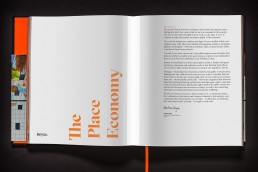
ClarkeHopkinsClarke
hello@henryro.com
Client: ClarkeHopkinsClarke Architects
Service: Custom Project – Event
“…Aboriginal Housing Victoria’s portfolio of around 1500 rental properties was mostly larger, single-storey villas and houses. That works well for larger families and the larger households associated with Aboriginal kinship networks. But growing numbers of singles, couples and young people often didn’t qualify for these and there’s a severe shortage of 1- and 2-bedroom units right across the social and community housing sector. AHV was keen to explore small-to-medium-density apartment living designed specifically for First Nations tenants. They turned to ClarkeHopkinsClarke and Breathe Architecture to help with this: CHC in Dandenong, and Breathe in Reservoir.
At CHC we’d been working with Women’s Housing Limited over many years to create exemplar social housing for vulnerable women and women-led families in suburbs across Melbourne. So we were able to draw on learnings from those multi-residential apartment communities with some similar aspirations: safety and security, comfort and sanctuary, sustainability that’s environmental, social and financial , quality design outcomes that help de-stigmatise social housing.
For me as a then-quite-young Aboriginal architect, this was an exciting opportunity to:
- Collaborate closely with a First Nations client for the first time
- Work with Aboriginal landscape designers to integrate Country, culture and community into outdoor spaces to a degree that’s not typical in social housing
- And deliver on AHV’s ambition for an exemplar reflecting Aboriginal culture and the importance of social cohesion in multi-residential living…”
